It’s The Little Things
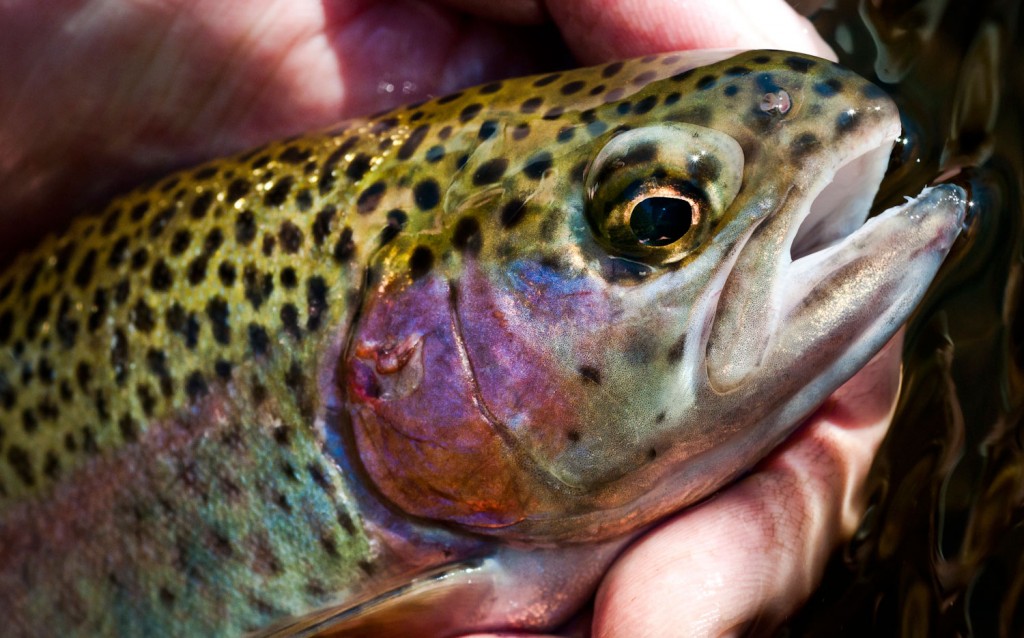
“I know it when I see it!”
Kent and I were doing a presentation at a fly shop the other day and after showing a couple of hundred fishing photos, during the Q&A part of the program, a fellow raised his hand and asked “do you guys catch any small fish?”
I guess I’m as guilty as anyone for perpetuating the idea that size is all that matters in fishing. I sure don’t feel like that’s true but when you look through my photos you, sort of, start to get that feeling. It’s easy to go too far the other direction too and get all moist and sloppy about tiny wild fish. I really do love tiny wild fish but that’s not all there is to me either. I just want to catch a great fish.
I guess I’ll define a great fish this way. When asked how he would define pornography Sen. Jessie Helms replied, “I know it when I see it!” I guess that goes for fish porn too.
The average size fish in the stream where this little guy was caught is around eighteen inches and I caught plenty of those fish the day this photo was taken, but this beautiful little guy that my buddy Dan landed is the one I’m going to show you. In my opinion he was
Read More »Never Give Up on a Bonefish
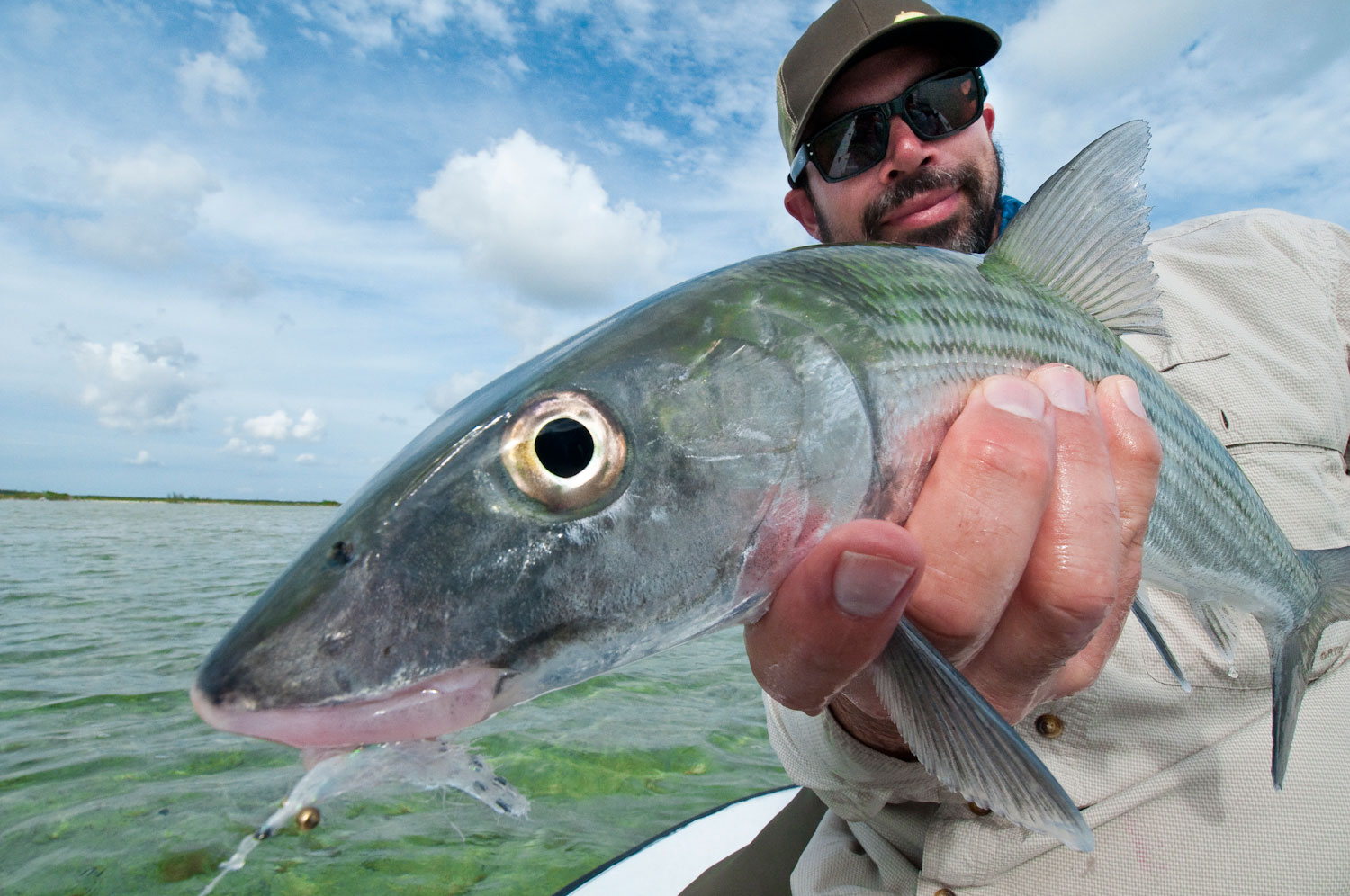
WE ALL KNOW THE HEARTBREAK OF SEEING A BIG FISH SPOOK AND RUN WHEN WE MAKE A CAST.
Whether its due to a poor presentation, the fish catching sight of us or something completely random and out of our control doesn’t matter. The pain is the same and it’s our natural reaction to consider that fish done and watch him swim away. For most species that’s the case, certainly for a wary trout but the bonefish is another subject.
Many times I’ve seen a bonefish spook and run or refuse a fly and turn away only to eat that same fly on the next cast. Maybe it sees the fly in a different light or from another angle that makes it more appealing or maybe it’s mood changes that quickly, I don’t know but it happens. What I do know is that as long as that fish is in range I will continue to show it that fly.
Read More »The Only Two Caddis Pupa Patterns I Really Need to Carry
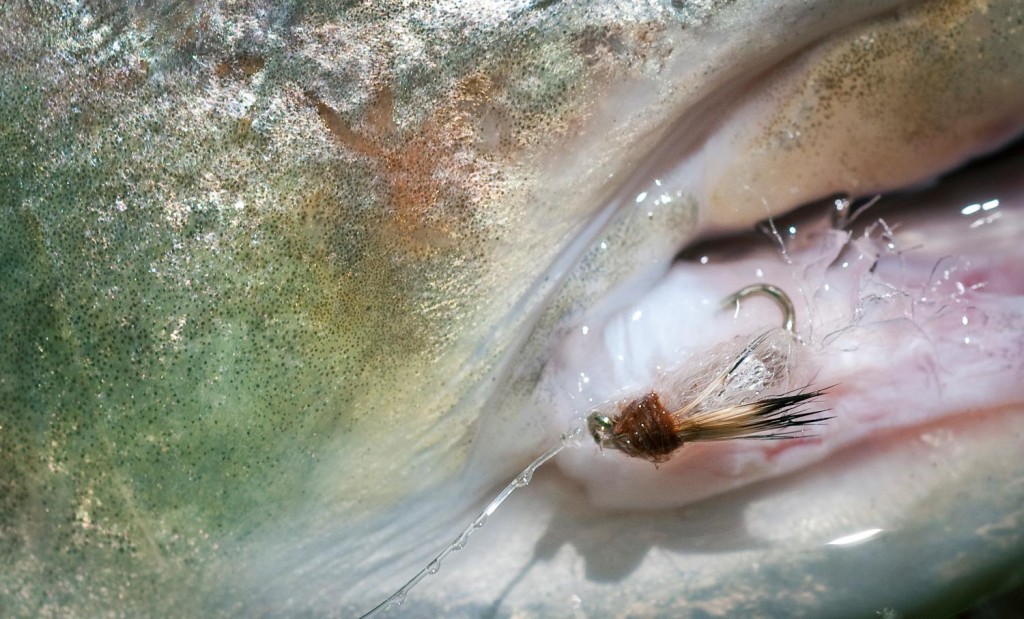
Caddisflies, who doesn’t love them? I can assure you trout sure do.
Tying a caddisfly imitation on, is usually not a bad move on any trout water you visit. Globally, there’s thousands of different species of caddisflies, and that fact alone, one could argue caddisflies are the most abundant and popular aquatic insects found in trout water. If I remember correctly, my first trout landed on a dry fly was with an Elk Hair Caddis. That was a long time ago, back when I knew nothing about fishing caddis pupa patterns and how important they were. I’ve since, with the help of the great Gary LaFontaine, author of the famous book, “Caddisflies”, deepened my knowledge of this aquatic insect, and I’ve built a whole new appreciation and respect for the importance they have in a trout’s diet. Year-round, but particularly during the spring, early summer and fall, fly anglers should be well stocked up on caddisfly pupa fly patterns.
It’s safe to say the most effective way to catch the trout during a caddisfly hatch is to fish caddis pupa imitations. I’ve got many different caddisfly pupa patterns in my fly box, but over the years, LaFontaine’s deep sparkle pupa and emergent sparkle pupa have caught me more fish than all the other pupa patterns combined. These patterns should be in every trout anglers fly box. Gary LaFontaine did an excellent job of researching and studying the characteristics, underwater look and behavior of emerging caddis pupa. He used aquariums with living caddisfly specimens, and spent countless hours scuba diving on rivers during caddisfly hatches to gain accurate insight of what the trout see during a caddisfly hatch. He then took the research and data he collected and hand picked fly tying materials that he could use to design and tie accurate caddisfly patterns for each life-stage of the aquatic insect. This was an astonishing feat that took Gary LaFonataine twenty years to compile and complete. We all owe him a great deal of gratitude and thanks for all his hard work. Without his contributions who knows where we’d be today in understanding
Read More »The Fish Of A Lifetime: Video
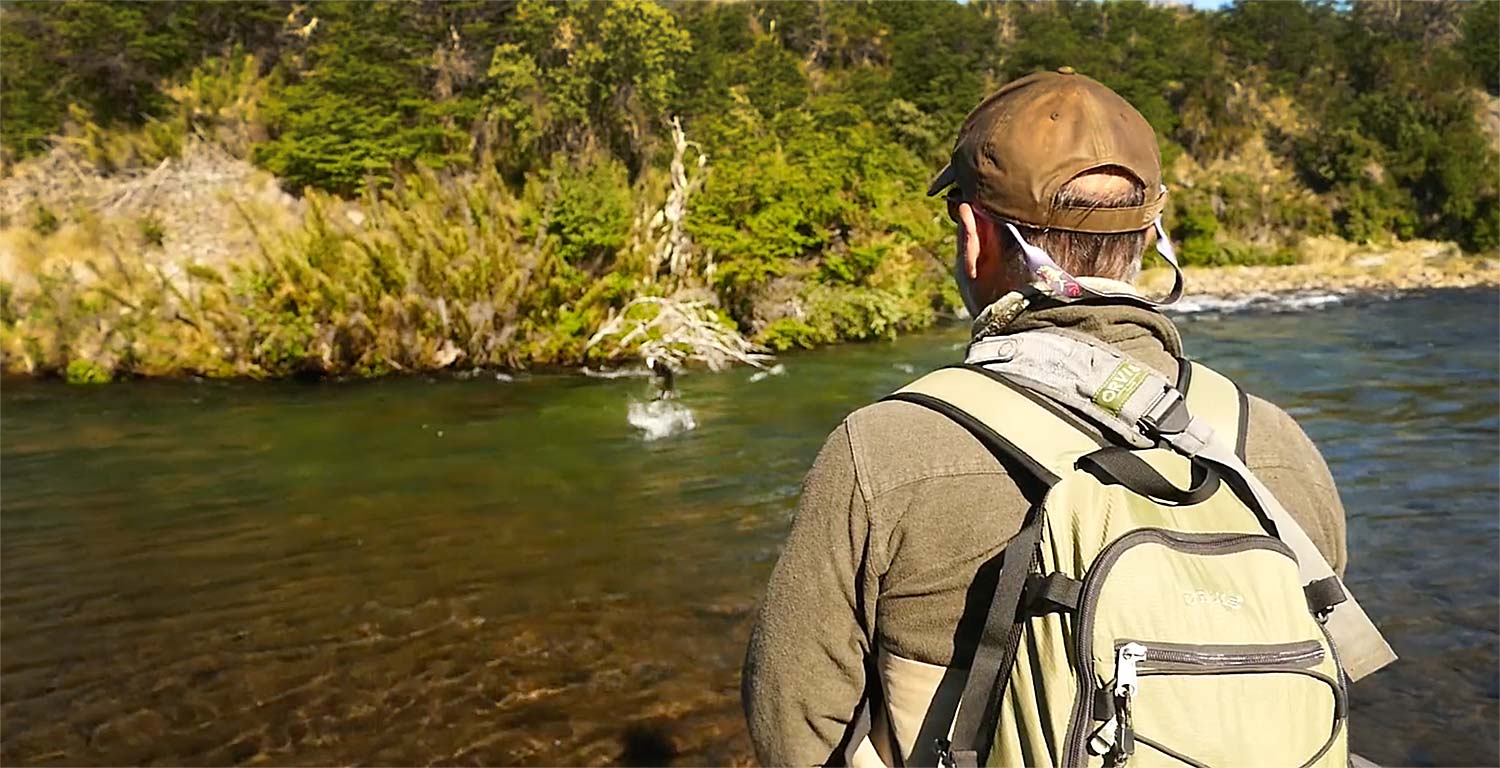
What happens when the fish of a lifetime refuses your fly three times?
If you are Jack Stephens, and you’ve spent half a century looking for a river no one has fished, and you’ve found it…you cast again. This is an amazing fishing story, and all caught on film. The kind of magic that only happens in Patagonia.
Read More »Louis’s Saltwater Casting Drill

There’s no debate, practicing your casting makes you a more effective angler.
But all practice is not created equal. Simply heading down to the park and hucking as much line as possible doesn’t accomplish much. A while back we published a practice routine recommended by Tim Rajeff. If you haven’t seen that video, you should check it out. Any angler can benefit from Tim’s practice plan.
Today I’m going to add my own casting drill. This is a saltwater specific drill that works on a couple of techniques commonly used in saltwater fly fishing. It simulates making three presentations to a moving fish and it requires several tasks at once.
I lay out 3 hula-hoops in a line. The first at 40 feet, the next at 60 feet and the last at 80 feet. If you can’t cast 80 feet just shorten the gaps and work with the cast you have. I then step to the side so the three rings appear as a diagonal line. Starting in my ready position, I cast to the first ring, then pick up the line and cast to the second ring, and then the third. I do all of this with no false casting.
Don’t stress out about hitting the center of the rings. Your accuracy will improve with practice. Work on making the presentations efficiently without false casting, by shooting your line to the target. Pick the line up slow and smooth so your fly will not make noise and spook the fish. Work on making the three casts as quickly and accurately as possible.
I like this drill because it teaches several techniques in a realistic fishing scenario. If you can hit those three targets quietly in 10 seconds or less you’re going to do well on the water. It’s easier than it sounds. Just stay focused and keep practicing.
For the gear-heads, I’m casting the new
Read More »Fixing A Twisted Fly Line In Seconds
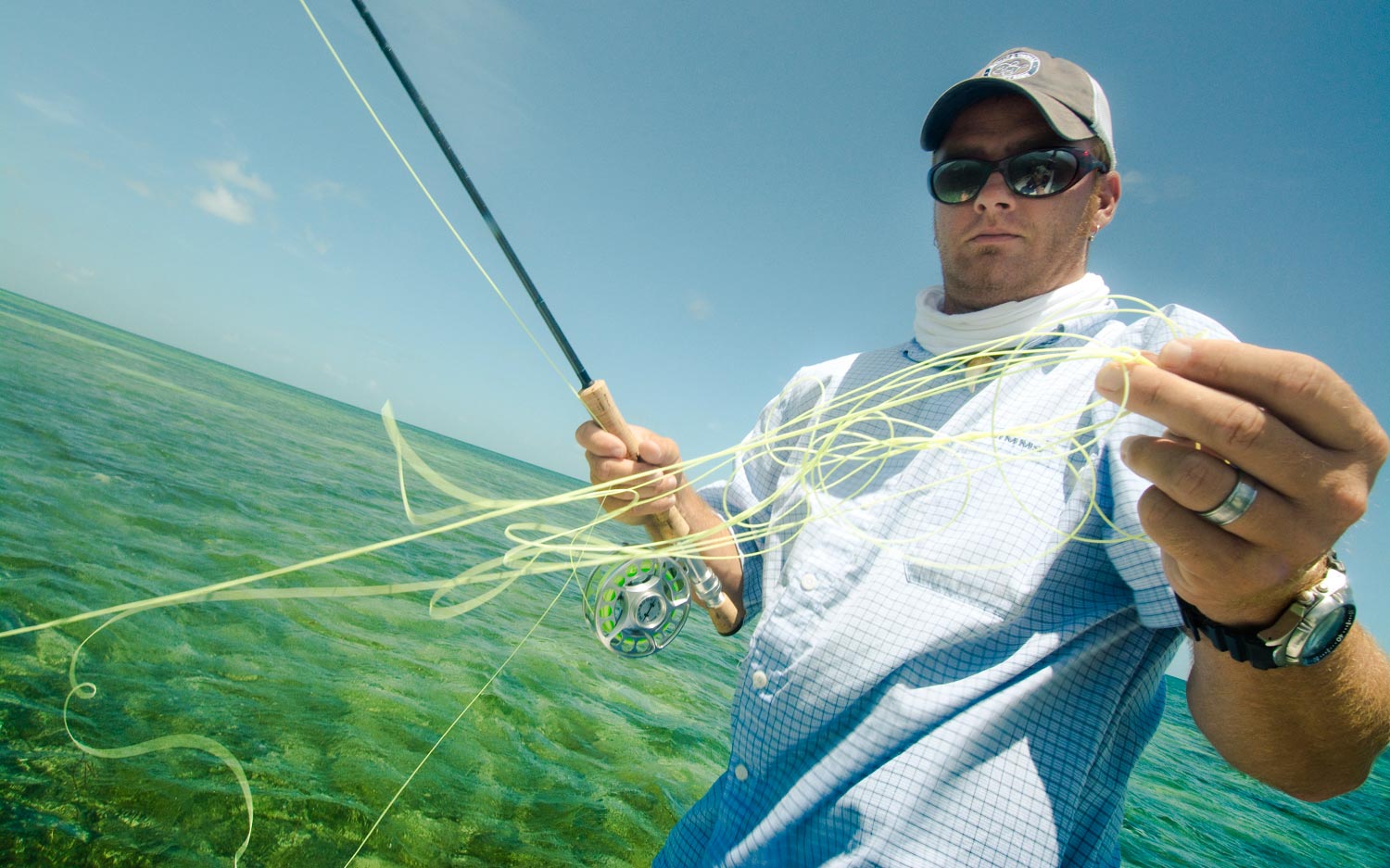
Every fly angler has experienced a wicked twist in their fly line causing it to tangle and knot at their feet.
It may be caused by a flawed casting stroke, a big fly twisting in the wind or it may be God punishing you for masturbating. Regardless of why it occurs, it’s frustrating at the least and heartbreaking at the worst. There’s nothing worse than taking a shot at the fish of a lifetime, only to have your cast cut short by a knot in your guides.
Fortunately, a twisted fly line is easy to fix. You don’t have to lose valuable fishing time, while stripping the entire line off the reel and towing it behind the boat or letting it hang in the current. You can fix that twist in seconds.
In this video, our good friend Zack Dalton from RIO Products shows you how.
Read More »Bends Are Like Best Friends
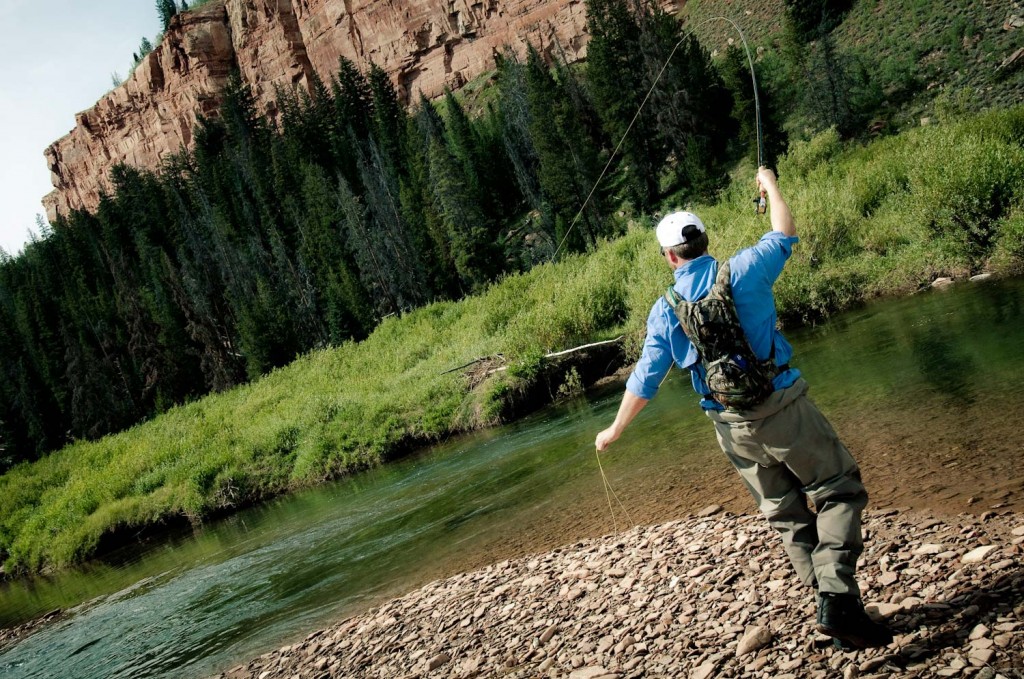
Bends in rivers and streams are like my best friends.
They possess all the qualities that I value and they always provide me consistent support in my endeavors. I don’t know about you, but when I find myself staring at a section of river or stream and I see a nice bend, I quite often head straight for it. I do this because I know it will usually produce a quality fish or two on the end of my line, and it’s generally very obvious to me where I should present my flies.
Just about every bend you encounter on the water will hold these three qualities.
1. One Well Defined Current
There usually will be one well defined current, collecting and moving food through the bend. This clearly indicates to anglers where the most food is drifting and where the fish should be positioned to intercept it.
2. Clear Channel or Trough
That well defined current usually has cut out a deep channel or trough in the bend. This reinforces further why fish will be located here. The deeper that fish can get below the surface and current, the less energy they’ll have to exert to maintain position and feed. The deeper water also provides
The Persistent Angler
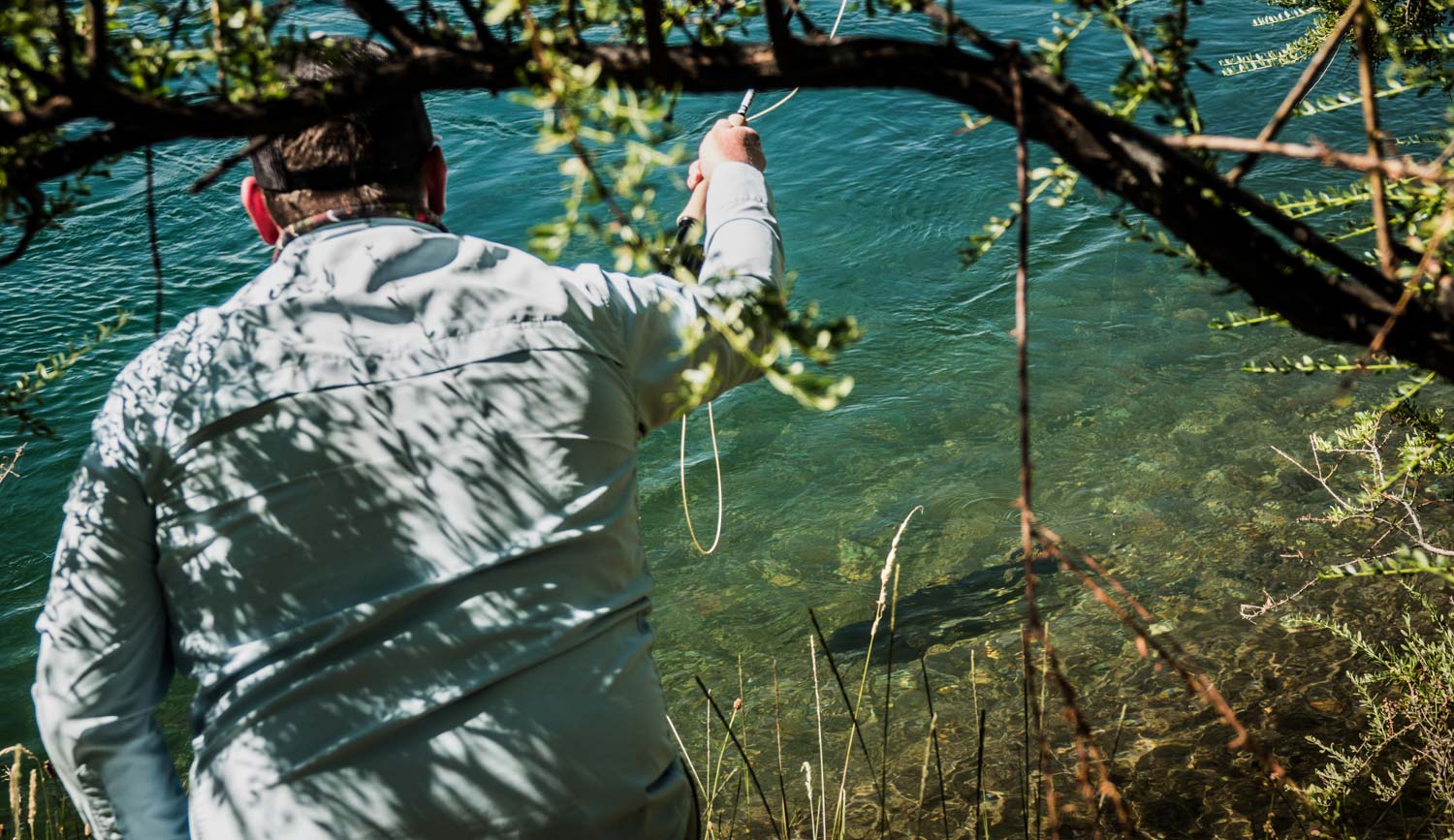
By Louis Cahill
Is there any point in continuing to pound a fish who just won’t eat?
The cool thing about fly fishing is that it offers such diversity. There is a species or a style of fishing every angler can enjoy. If you don’t like trout fishing, you may like bass or bonefish. If drifting dry flies isn’t your thing, stripping streamers may be. There is no wrong answer to the question, how should I fish? We all get something different out of fly fishing and, as long as you’re having fun and being respectful of the resources and your fellow angler, I say go for it!
Over the years, what I get from fly fishing has evolved, and it hasn’t evolved in the same way for every kind of fly fishing. I freely admit that, in some ways and for some fish, I’ve gotten lazy. I’m not proud of it but I don’t apologize for it either. Trout fishing specifically has become more of an excuse to hang out with my friends or my dog more than a goal oriented pursuit. I’m admittedly more interested in having fun than I am catching huge fish or a lot of fish. I guess that’s why I often find myself just as happy watching a buddy fish a run. I think it’s also why I’m perfectly happy walking away from a stubborn fish. The thing is, I admire anglers who don’t.
I’ve known a lot of anglers who really enjoy catching the uncatchable fish. A couple of them so focused they could care less about the other fish happily rising in a run and spend the bulk of the day butting heads with the stubborn fish who won’t eat.
The cool thing is that these guys, the really good ones, usually get that fish.
One of those anglers is Justin Pickett, no stranger to regular readers. Justin is one of those guys who almost always gets that problem fish to eat. I’ve watched him work a single fish for three hours. Like a sniper, dug in and waiting for a shot. When he gets locked in like that you may as well get comfortable. Have some lunch, take a nap, read a book, or just clip a walkie-talkie to his belt and go see the rest of the river. It’s going to take a minute.
You may think that’s cool or you may think it’s crazy but the results are hard to argue with. That fish he spent three hours on, while the rest of us had lunch, was a 32 inch brown trout and, yes, he landed it. There were four of us and no one thought that fish would eat, except Justin. I’ve never seen a more deserved fish.
The thing I think makes the case for persistence is
Read More »Listen To Your Heart

Hear I am, in the front row of Symphony Hall, tears streaming down my face, thinking about Beethoven.
If you’re wondering what this has to do with fly fishing, that’s a fair question. Stick with me for a bit and maybe I’ll get there. Maybe not. First you’re going to hear about Beethoven, and a little about me.
Music has always been a huge part of my life. It’s one of a few things I am truly passionate about. My musical taste has never been defined by genre. I deeply love some pieces from every style of music, and passionately hate many more. It’s hard to have a conversation with me about it. I know what I think. At heart, my aesthetic is punk rock. Long before we coined that term. I have always been attracted to artists who rebelled. Creators so passionate and singular in their vision that they angered way more people than they attracted. For me, these are the ones who get it, and no one got it like Beethoven. If you trace the family tree of punk back past Joe Strummer, Iggy Pop, Brian Jones, Jerry Lee Lewis and Hank Williams, you will eventually find the first punk to stand erect and scream at the sky was likely Beethoven.
Of everything he wrote, the piece that really gets to me is the Ninth. I’m in pretty good company saying that it is the single most powerful piece of music ever written. I’ve been a regular at the Atlanta Symphony Orchestra for over thirty years and have had the chance to see the Ninth performed several times. I was even lucky enough to attend a dress rehearsal, with Yoel Levi conducting the orchestra and the late Robert Shaw the chorus, in which they played the fourth movement twice! My wife and I saw it again last night and it was one of the most powerful musical experiences of my life.
I had a bit of an epiphany there in the front row. I’m going to share it with you but first you should understand that I am not a musicologist or musical historian, just an enthusiastic fan. Scholars have argued about the meaning of the Ninth Symphony since it was written. I’m certainly not going to settle that. In the end, like any piece of art, the Ninth belongs to every one who listens to it. Its meaning is that which you ascribe.
Beethoven was a troubled dude. He had the reputation for being an asshole
Read More »Swing For The Fence On Every Cast
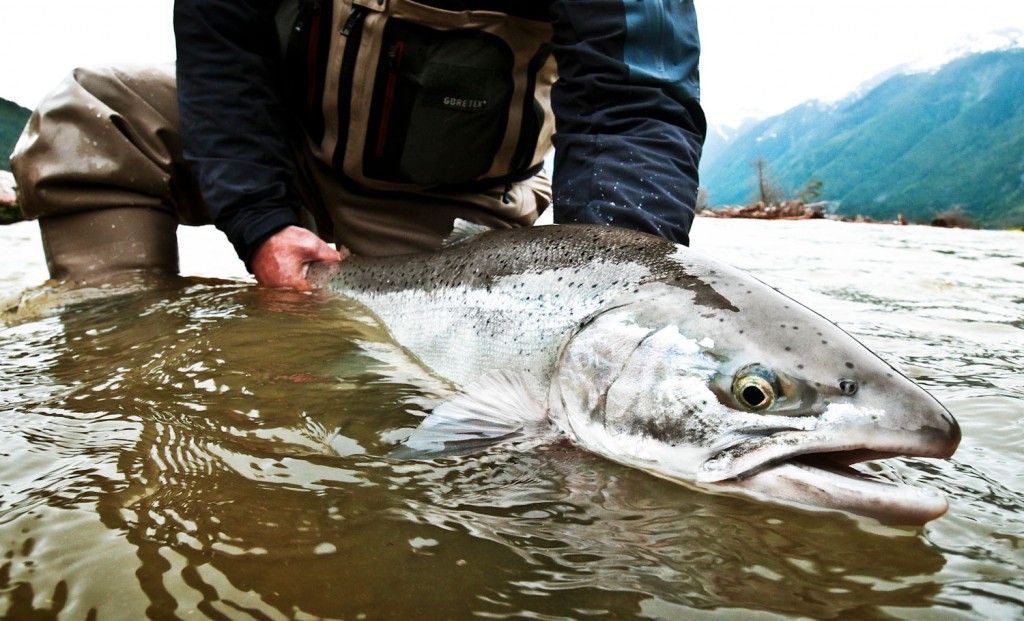
By Louis Cahill
After four days swinging flies in dirty water without a pull it’s easy to lose faith.
I faced some pretty tough conditions on a recent trip to the Dean River in British Columbia. Heavy rain turned the river into a raging mess of mud and floating trees. It was not a pretty sight, but I turned it around.
High water tactics can be laborious. Fishing long heavy sink tips and weighted flies makes casting a chore and swinging your fly a downright pain in the ass. You have to put the fly where the fish are and in high water they are hunkered down on structure or hugging the bank. Getting down to submerged structure in fast water means weight and lots of it. That means lots of hanging up on the rocks, especially at the end of your swing.
After four days with no action and hanging your fly up on every cast it’s easy to start avoiding the water that you know is going to give you trouble. Little things like picking up your fly just before it reaches the end of its swing or not giving that sink tip quite as long to sink makes robotic fishing easier on your nerves. The problem is, it doesn’t catch fish.
The worst is when, after days of toil without a fish, you snag that rock and immediately throw your line over it only to see it turn and bolt downstream without your fly in its mouth. We’ve all done it. I learned long ago that big fish often eat like rocks. I always hold pressure on a rock for a few seconds at least. It’s paid off many times and it paid off again in BC.
After four days of fishing and clearing ten thousand snags, when my fly stopped I held on, maybe ten seconds, before a beautiful bright steelhead gave me a sign of life. Ten seconds feels like an eternity at the end of four days but it’s like Lou Reed says, “You need a bus load of faith to get by.”
Kent calls it fishing with confidence. Faith or confidence, either way a good fisherman always believes in his heart that, this is the cast. Eventually he’s right. My numbers were
Read More »